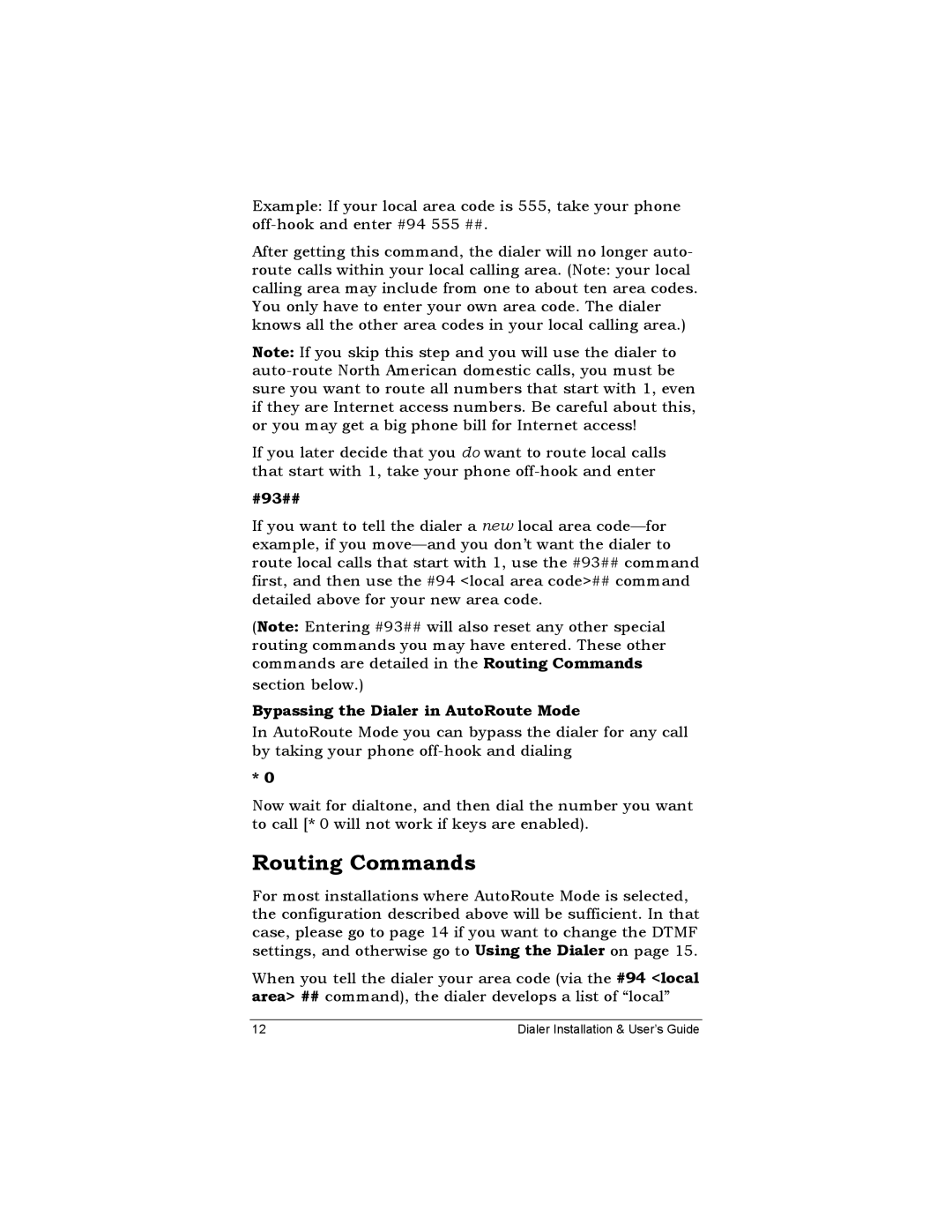Example: If your local area code is 555, take your phone
After getting this command, the dialer will no longer auto- route calls within your local calling area. (Note: your local calling area may include from one to about ten area codes. You only have to enter your own area code. The dialer knows all the other area codes in your local calling area.)
Note: If you skip this step and you will use the dialer to
If you later decide that you do want to route local calls that start with 1, take your phone
#93##
If you want to tell the dialer a new local area
(Note: Entering #93## will also reset any other special routing commands you may have entered. These other commands are detailed in the Routing Commands
section below.)
Bypassing the Dialer in AutoRoute Mode
In AutoRoute Mode you can bypass the dialer for any call by taking your phone
* 0
Now wait for dialtone, and then dial the number you want to call [* 0 will not work if keys are enabled).
Routing Commands
For most installations where AutoRoute Mode is selected, the configuration described above will be sufficient. In that case, please go to page 14 if you want to change the DTMF settings, and otherwise go to Using the Dialer on page 15.
When you tell the dialer your area code (via the #94 <local area> ## command), the dialer develops a list of “local”
12 | Dialer Installation & User’s Guide |
